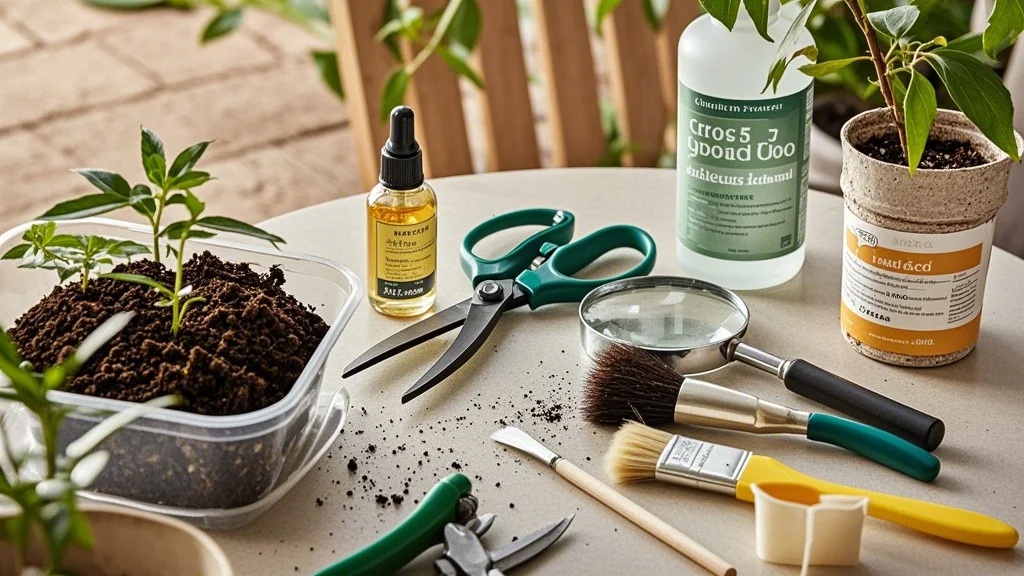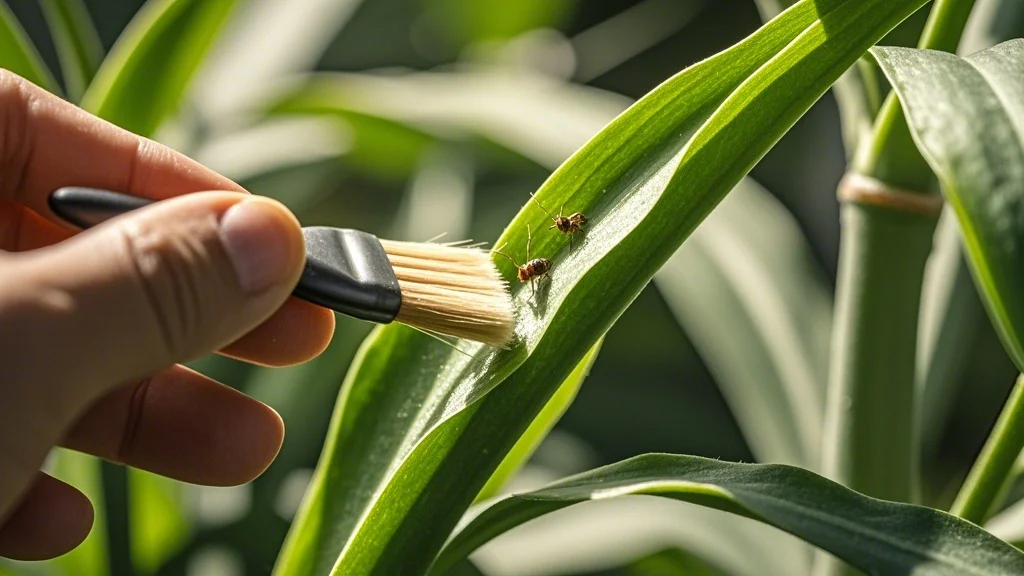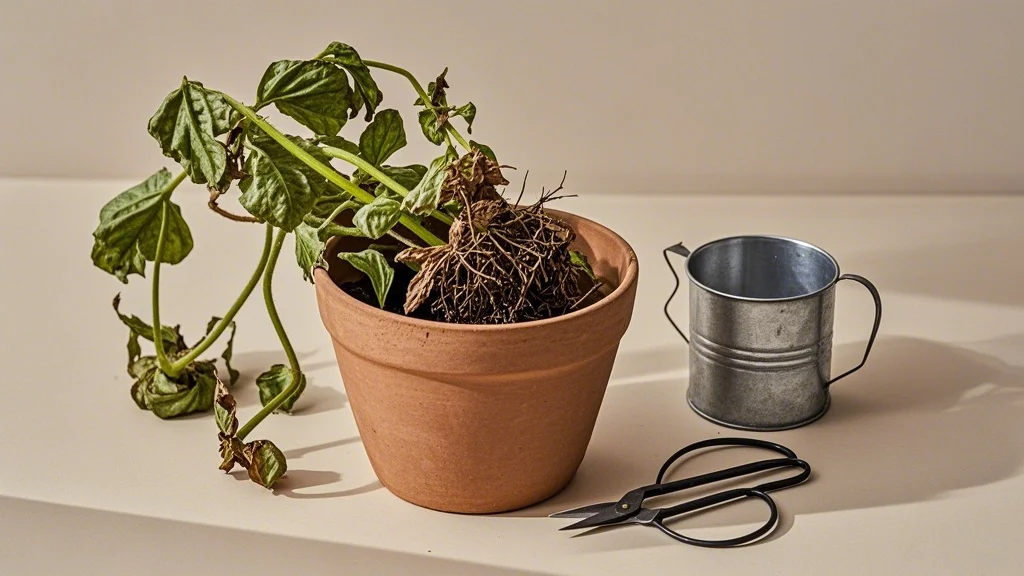Reviving plants after pest damage is a crucial skill for urban gardeners. While challenging, it’s immensely rewarding to nurse your green companions back to health. This guide will equip you with strategies to restore your plants’ vitality and appearance post-infestation.
Contents
Tools and Materials

Essential Tools:
- Pruning shears
- Magnifying glass
- Soft brush
- Spray bottle
Essential Materials:
- Neem oil
- Insecticidal soap
- Balanced liquid fertilizer
- Fresh, sterile potting mix
Optional Alternatives:
- Horticultural oils
- Beneficial insects (ladybugs, predatory mites)
3. Preparation
Time and Space Requirements:
- Set aside 1-2 hours initially, with daily follow-ups
- Isolate affected plants in a quarantine area
Safety Precautions:
- Wear gloves and a mask when handling pesticides
- Work in a well-ventilated area
Plant Preparation:
- Gently remove any loose, damaged leaves
- Inspect the entire plant, including undersides of leaves and soil surface
Step-by-Step Guide

Step 1: Pest Removal and Quarantine
- Isolate the affected plant to prevent spread
- Manually remove visible pests using a soft brush or cotton swab
- For stubborn infestations, prune heavily affected areas
Step 2: Cleansing Treatment
- Mix insecticidal soap or neem oil solution according to package instructions
- Thoroughly spray the entire plant, focusing on leaf undersides and stem joints
- Allow the solution to dry naturally
Step 3: Soil Treatment
- Remove the top layer of soil, which may contain pest eggs
- Replace with fresh, sterile potting mix
- If root pests are suspected, consider repotting entirely
Step 4: Nutritional Support
- Once pest activity ceases, begin a gentle fertilization regimen
- Use a balanced, diluted liquid fertilizer weekly
- Supplement with foliar feeding for faster nutrient uptake
Step 5: Environmental Adjustments
- Optimize lighting conditions – most plants recover faster with bright, indirect light
- Maintain consistent humidity using a pebble tray or humidifier
- Ensure proper air circulation to discourage future pest issues
5. Common Issues and Solutions
Potential Challenges:
- Persistent pest resurgence
- Leaf drop or yellowing
- Stunted growth
Solutions and Adjustments:
- For recurring pests, alternate treatments and consider systemic pesticides
- Combat leaf issues with increased humidity and gentle misting
- Boost growth with seaweed extract or mycorrhizal fungi supplements
Variations for Different Plant Types:
- Succulents: Reduce watering and increase light during recovery
- Ferns: Maintain higher humidity and indirect light
- Flowering plants: Temporarily remove buds to redirect energy to foliage recovery
6. Aftercare
Immediate Post-Treatment Care:
- Monitor daily for pest resurgence
- Avoid overwatering to prevent stress
- Maintain quarantine for at least two weeks
Long-Term Maintenance:
- Implement a regular inspection routine
- Introduce beneficial insects for natural pest control
- Strengthen plant immunity with silicon-rich fertilizers
Signs of Success:
- New leaf growth
- Improved color and vigor
- Absence of pest activity for 3-4 weeks
7. Frequently Asked Questions (FAQ)
-
Q: How long does it typically take for a plant to recover from pest damage?
A: Recovery time varies, but most plants show significant improvement within 2-4 weeks of consistent care.
-
Q: Can I use chemical pesticides for faster results?
A: While effective, chemical pesticides can stress already weakened plants. Natural methods are gentler and often equally effective for long-term recovery.
-
Q: Should I remove all damaged leaves during recovery?
A: Remove only severely damaged leaves. Partially damaged leaves can still photosynthesize and contribute to the plant’s recovery.
-
Q: Is it safe to propagate from a recovering plant?
A: Wait until the plant shows strong signs of recovery and has been pest-free for at least a month before attempting propagation.
-
Q: How can I prevent future pest infestations?
A: Regular inspections, proper plant spacing, and maintaining optimal growing conditions are key to preventing future pest issues.
8. Conclusion
Rebuilding plant health after pest damage requires patience and consistent care. By following these steps – isolating, treating, nourishing, and monitoring – you can guide your plants back to vibrant health. Remember, each recovery is a learning experience that strengthens your gardening skills. With time and practice, you’ll become adept at not just treating pest damage, but preventing it altogether. Happy gardening, and may your urban jungle thrive!









